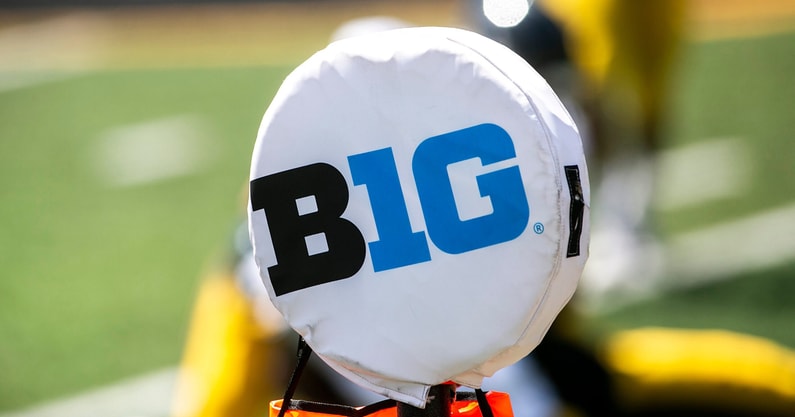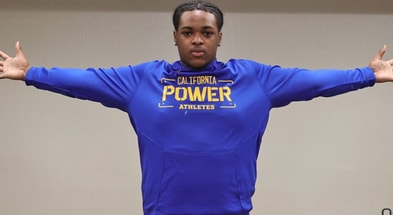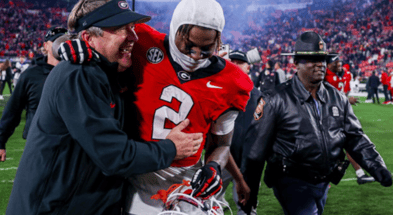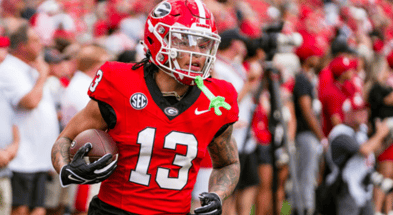What future Big Ten football schedules mean to Purdue: "We’re going to have to meet the challenge"

When the Big Ten announced its future football schedules with the addition of UCLA and USC in June, the nine-game conference slate featuring 16 teams was the ideal setup.

The goal was for every league team to play each other at least once during a four-year cycle.
However, when Oregon and Washington join the Big Ten in August, could the league achieve the same objective in an 18-school conference?
Now, the Big Ten will use a five-year cycle to produce the same schedule format where every school plays each other at least once. The latest set of conference schedules, announced Thursday and still features nine league games, begins in 2024 and runs through 2028.
“Everybody likes that, and it makes you feel connected as a conference. There’s no perfect math but you’ll see everybody, which I think is good,” Purdue athletic director Mike Bobinski told GoldandBlack.com.
How it shakes out:
2024: (Home) Nebraska, Northwestern, Oregon, Penn State. (Road) Illinois, Indiana, Michigan State, Ohio State, Wisconsin
2025: (Home) Illinois, Indiana, Ohio State, Rutgers, USC. (Road) Michigan, Minnesota, Northwestern, Washington
2026: (Home) Maryland, Minnesota, Washington, Wisconsin. (Road) Illinois, Indiana, Iowa, Penn State, UCLA
2027: (Home) Illinois, Indiana, Michigan State, Penn State, UCLA. (Road) Maryland, Nebraska, Ohio State, Oregon
2028: (Home) Iowa, Michigan, Nebraska, Northwestern. (Road) Illinois, Indiana, Michigan State, Rutgers, USC
What the new format means for the Boilermakers:
• Since Purdue is already playing at Oregon State in 2024, it will not play a conference game on the West Coast next season. The Big Ten took that game into consideration when putting together next year’s schedule.
• Purdue’s protected rivals are the same from the 16-team lineup – Indiana and Illinois.
• Along with a strong slate of Big Ten games, the Boilermakers also face Notre Dame five times between 2024 and 2028. Other upcoming Power 5 programs on the non-conference schedule – Wake Forest (twice) and a home matchup against North Carolina.
• Starting in 2025, the Boilermakers will play one conference game on the West Coast each season.
• When factoring in Notre Dame, the 2025 schedule could be the toughest in program history with Ohio State, Michigan, Washington and USC.
• Dates of games will be announced later.
A lot of what the league established with 16 teams remains the same with 18.
The East-West format is ending after this season, and there’s no desire to bring them back. A brief conversation was held about playing 10 conference games.
“It was 30 seconds and we moved on,” Bobinski said. “It did not get any real traction at this time. Might that come up again? Maybe but it wasn’t like, let’s table this and talk about it again. It’s dead for now.”
Bobinski does prefer a 10-game format, but he understands the desire to remain at nine, in part because athletic departments need seven home games to fund the budget and a 10-game schedule makes it next to impossible to stage a home-and-away non-conference series.
Top 10
- 1New
Baseball Top 25 projection
Massive Top 10 shakeup
- 2Hot
Shedeur Sanders prank
Son of NFL DC admits guilt, apologizes
- 3
Falcons release statement
Involvement of DC in Sanders prank
- 4Trending
Jalen Milroe warns
Teams that passed on him
- 5
Tyler Warren pranked
Tied to Shedeur Sanders call
Get the On3 Top 10 to your inbox every morning
By clicking "Subscribe to Newsletter", I agree to On3's Privacy Notice, Terms, and use of my personal information described therein.
“When your leagues get as big as they are, the theory is you’re playing in different regions, but we’re playing in different regions,” Bobinski said. “The other theory is for the health of college football, you spread the competition around to other places to other leagues and other levels and that is probably more compelling than anything else at this point. Absent all of that, I’d rather play 10 games., Five at home. Five on the road and on you go.”
Playing seven home games is still important at Purdue because of the revenue component and other Big Ten schools support staying at nine games for similar reasons.
“Seven home games matter and they really matter to the big stadiums from a revenue perspective to fund all their programs,” Bobinski said. “If they had to go out and buy two (non-conference games) every year, you’re limiting who you are going to play against.”
Regardless, the future Big Ten schedules will challenge the Boilermakers and other conference schools on a yearly basis.
“You look at everybody’s lineup, ‘Whoa, this is real,’ ” Bobinski said. “This is a real challenging situation from a football perspective and it’s not in a bad way. We’re going to be a helluva league; we’re already in a helluva league and we’re going to be a stronger league. To be relative and successful, you’re going to have to be damn good.
“We’re going to play lots of good games against great teams, home and away. I think it will be great for our fans, I think it will be great for fans of the Big Ten and of college football. You’ll see lots of compelling games and storylines. That’s all good.
“From a national perspective, the Big Ten is clearly going to be one of two in terms of where the power and the strength lies. Look at the names, the games, and the teams, it’s the way it’s going to be. I’m excited about it. It’s a challenge, but we’re going to have to meet the challenge at Purdue in order to matter from a football perspective and we intend to do that.”

























